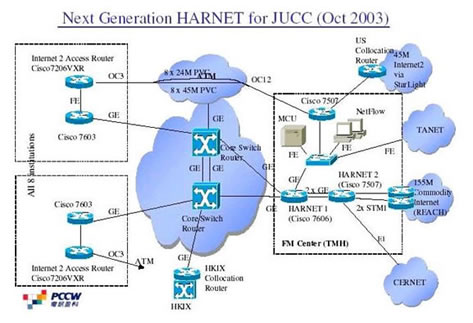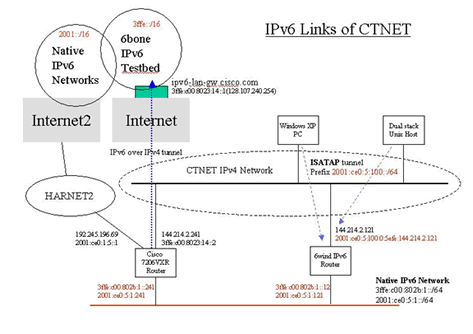Upgrading HARNET: You Can Make a Difference
A series of upgrades has been carried out in recent months on the HARNET (Hong Kong Academic and Research Network), a network that interconnects all the local universities). Major upgrades include
-
The routers at the HARNET core as well as the router at each institution used for the HARNET connection are replaced with higher-end models, which can support multiple gigabit Ethernet connections.
-
Gigabit Ethernet instead of ATM technology is now adopted for inter-connecting HARNET members at a speed of either 100Mbps or 300Mbps, depending on individual bandwidth requirements. The Gigabit Ethernet links are supported by a Metro Ethernet network (a metropolitan area network based on Ethernet technology), which is set up by PCCW for HARNET.
-
A HARNET router is co-located at HKIX (Hong Kong Internet eXchange) and it is connected to HKIX using a Gigabit Ethernet link.
-
The shared overseas Internet bandwidth is upgraded from 96Mbps to 155Mbps.
Apart from the above upgrades, the HARNET's CERNET (China Education and Research Network) link was upgraded from 2Mbps to 155Mbps on 1st December 2003.
All users connected to the CTNET, the CityU Campus Network, will enjoy improved Internet performance as a result of the upgrades.
The following depicts the upgraded HARNET:

IPv6 Links of CTNET
IPv6 (Internet Protocol Version 6) is the next generation network layer protocols designed by IETF to replace the current Internet Protocols, IP Version 4 (IPv4).
CTNET is now dual-home connected to IPv6 networks through two links. The first link is an IPv6 over IPv4 tunnel to 6bone, a testbed for IPv6 protocols. The second link is a direct connection to the global IPv6 networks through CTNET's Internet2 link. As such any computer on CTNET with IPv6 protocol stack installed is able to communicate with a remote IPv6 host using one of the following network connections:
-
A network port connected to an IPv6 subnet
-
An internal IPv6 over IPv6 tunnel such as an ISATAP tunnel
With these connections in place, CTNET users may experiment or try out Internet applications running on top of the next generation IP protocols.
Furthermore, an ISATAP (Intra-Site Automatic Tunnel Addressing Protocol) server has been set up on CTNET to facilitate Windows XP systems with IPv6 enabled (which is done by running ipv6 install at the command prompt) to access remote IPv6 hosts without requiring any software configurations.
